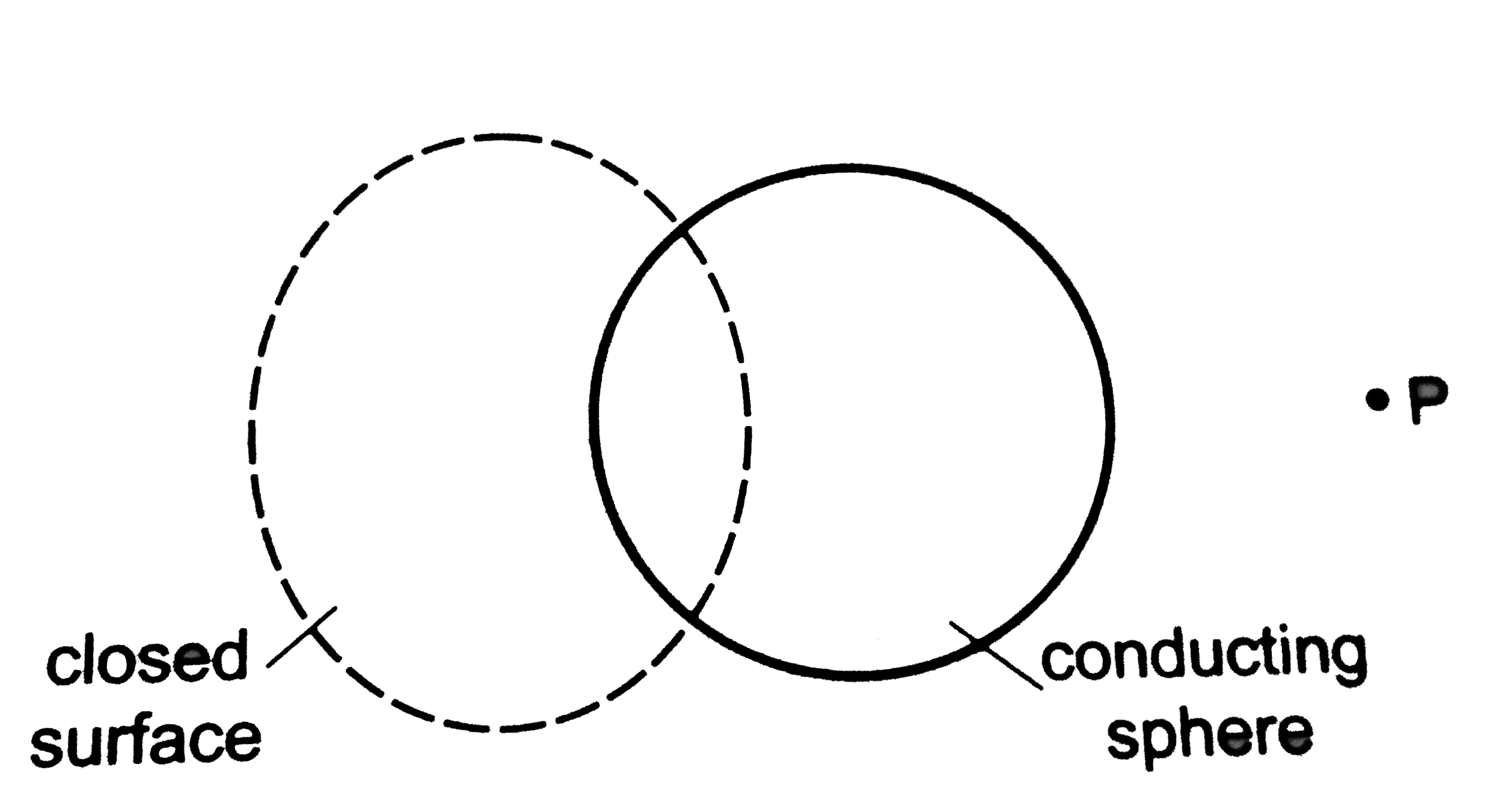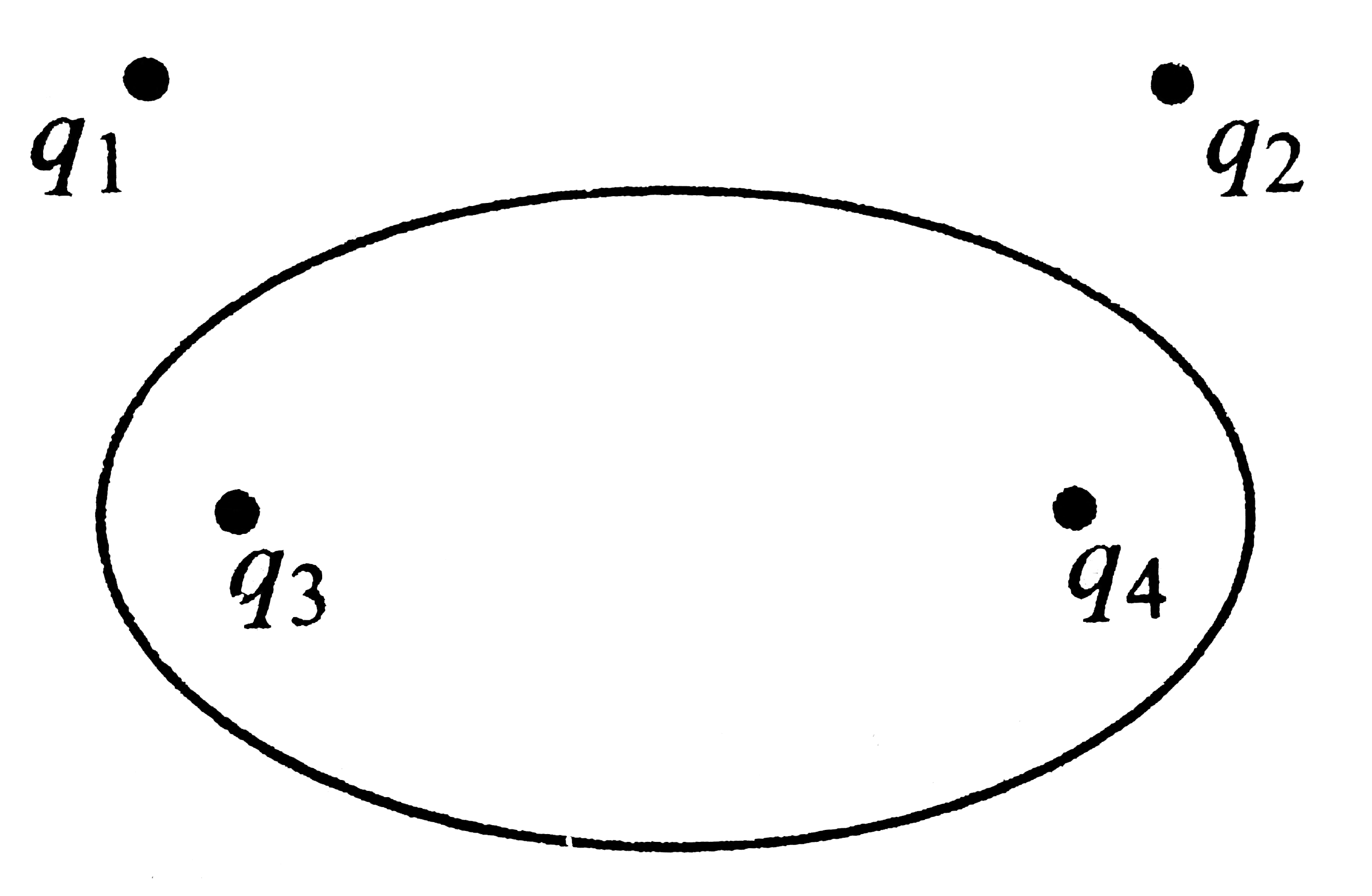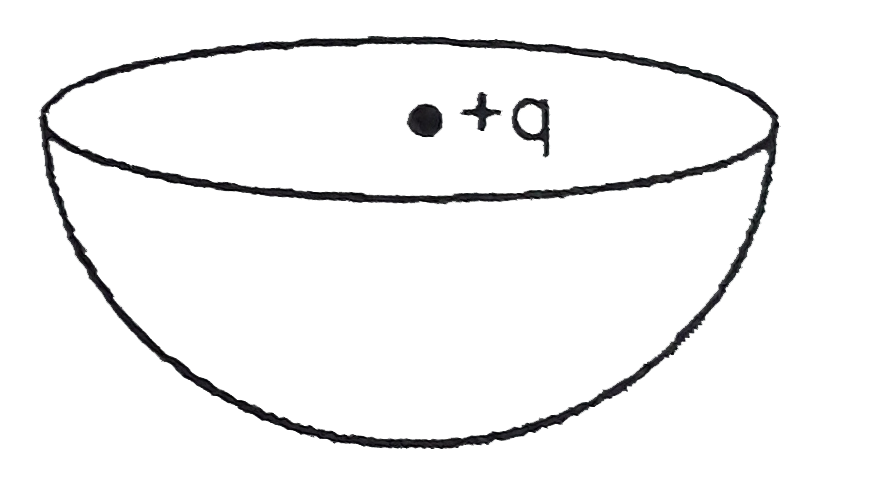Figure shows a closed dotted surface which intersects a conduccting uncharged shere. If a positive charge is placed at the point P, the flux of the electric field through the closed surface

will remain zero
will be negative
will be positive
will be infinite
The correct Answer is:B
Step by step video & image solution for Figure shows a closed dotted surface which intersects a conduccting uncharged shere. If a positive charge is placed at the point P, the flux of the electric field through the closed surface by Physics experts to help you in doubts & scoring excellent marks in Class 12 exams.
Updated on:21/07/2023Topper's Solved these Questions
Similar Questions
Figure shown a closed surface which intersects a conducting sphere. If a positive charge is placed at the point P, the flux of the electric field through the closed surface

View SolutionFigure shown a closed surfce which intersects a conducting sphere. If a positive charge is placed at the point P, the flux of the electric field through the closed surface

View SolutionIf the flux of the electric field through a closed surface is zero,
View SolutionFigure shows a closed surface which intersects a conducting sphere. If a positive charge is placed at point P, find the sign of flux passing through the curved surface S.
 .
.
View SolutionA charge Q is placed at the centre of a cube. Find the flux of the electric field through the six surfaced of the cube.
View SolutionA capacitor of capacitance C is charged to a potential V. The flux of the electric field through a closed surface enclosing the capacitor is
View SolutionFind the flux of point charge q through the square surface ABCD as shown
View SolutionFigure shows four charges q1,q2,q3,andq4 fixed is space. Then the total flux of the electric field through a closed surface S, due to all the charges, is

View SolutionUnder what conditions can the electric flux ϕE be found through a closed surface?
View SolutionA point charge +q is placed at the centre of curvature of a hemisphere. Find flux through the hemispherical surface.

View Solution
